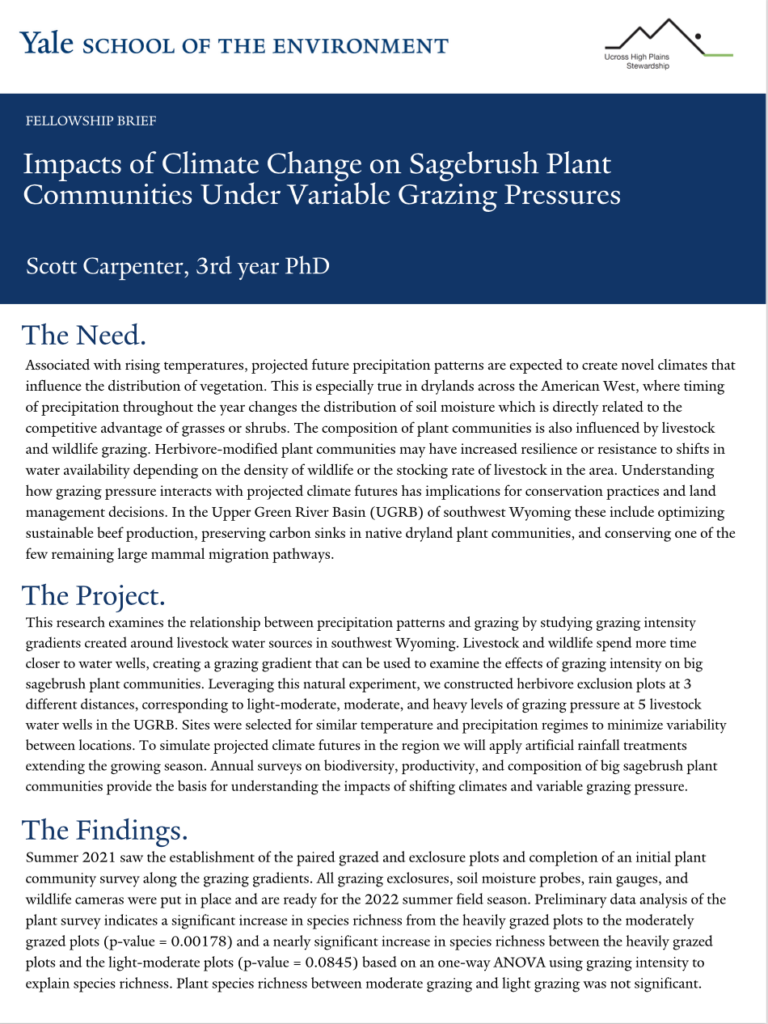Associated with rising temperatures, altered precipitation patterns are predicted to create novel climates contributing to changes in the distribution of potential vegetation. This is especially true in drylands across the American West, where the annual distribution of precipitation influences water availability, which is directly related to the competitive advantage of grasses or shrubs. Alongside shifting precipitation patterns, livestock grazing is known to influence the distribution and composition of plant communities. Scott’s research sought to untangle the relationship between grazing and precipitation patterns by leveraging grazing intensity gradients created around livestock water wells in Southwest Wyoming. Cattle spend more time grazing closer to wells creating a natural experiment to examine the effects of grazing intensity on big sagebrush plant communities. By adding water addition treatments that simulate expected climate futures for the region, Scott’s research examined the impacts of variable grazing pressure and shifting precipitation patterns on the biodiversity, productivity, and composition of big sagebrush plant communities. Results of this experiment have had implications for management decisions related to stocking rate and grazing duration in the region.
PROJECT DELIVERABLE

FELLOWSHIP BRIEF

STUDENT RESEARCHER

Scott Carpenter, Western Resource Fellow| Scott is a doctoral student in the School of the Environment at Yale University where he researches the impact of changing precipitation patterns on plant communities in the Intermountain West. Following his undergraduate degree at Princeton University, Scott worked as a project manager for an NSF-funded ecological study at Ol Pejeta conservancy, Kenya’s second largest cattle operation and premier rhino tourism destination. While living in central Kenya Scott developed an interest in mixed-use rangelands, particularly how increasing climate variability influences plant communities and the subsequent consequences for wildlife and livestock. His research in Southwest Wyoming focuses on the impacts of shifting precipitation patterns and increased variability for big sagebrush plant communities through a mix of process-based modeling, field experimentation and survey methods. See what Scott has been up to. | Blog
